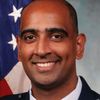At the Air Force Academy, the subject of religion has always been the proverbial elephant in the room. Yet, instead of ignoring the elephant, a group of cadets decided to welcome it by holding the first-ever Hindu Ganesh prayer at the USAF Academy.
For the cadets, faith traditions continue to serve an integral role in meeting the daily rigors of service academy life. On Sept. 21, the Air Force Academy hosted a Hindu ceremony for cadets called the "Sri Ganesha Chaturthi," a prayer held to observe the birthday of the Hindu God Ganesha. In Hindu mythology, Lord Ganesh has the head of an elephant and is considered the remover of obstacles and patron of wisdom. Naturally, the unique blend of Eastern tradition and military scenery made for an exciting day at the Academy. Chaplain (Col.) Robert Bruno, Chief of Chaplains at the Academy and Mythli Bachu, Chairperson of the Hindu Council of North American Temples, hosted the event.
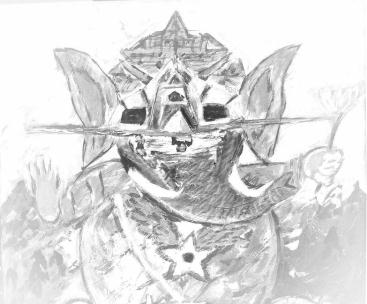
Ganesh Image by Banvir Chaudhary
The Air Force Academy Cadet Chapel is a widely recognized symbol of the United States Air Force and a well-known landmark in North America. The shape of the chapel itself invokes images of a spiritual journey; the spires are shaped like wings and pews are designed in the shape of World War I propellers, emblematic of the path of knowlege and service taken by Airmen.
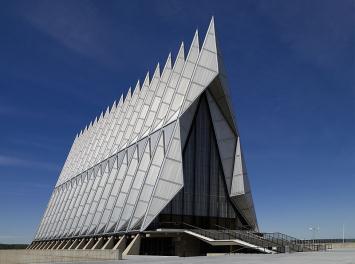
The Air Force Academy Cadet Chapel, Colorado Springs, Colorado
The Cadet Chapel was designed for a secular purpose: supporting the spiritual needs of the cadet wing. The Protestant chapel forms the largest chamber, while the Catholic and Jewish chapels and a Buddhist room are also located under the same roof. There is also a larger room used for Islamic services. At the Academy, spiritual wellness forms a pillar of strength that often helps cadets survive one of the most rigorous academic and military training programs in the world. The Chapel is home to all traditions; there is even an all-faiths room open to any of the worlds faiths represented at the Academy.
Sparking Social Innovation
For Hindu cadets at the Academy, the welcoming of such a ceremony was indeed a historic milestone. But the experiences brought forth by the Ganesh Chathurthi also fulfilled a broader purpose for the insitutution. For it is cross-cultural engagements like this that make the Academy a crucible for creativity and innovation -- innovation that fuels the most technologically advanced organization in the world, the United States Air Force. Through his spiritual life force, Lord Ganesh encourages the development of wisdom in the arts and sciences, exactly what the Academy is designed to produce.
Furthermore, events like this prepare cadets for the teaming challenges they will face as future global leaders. Whether serving in training or combat, Airmen share a unique bond with one another. Their toughest days often occur in close quarters, and usually associated with a significant amounts of stress. Often far away from home, Airmen share their cultural background, hopes, dreams and even their food with their fellow service members in some of the most austere environments in the world. Eventually, they become wingmen for life.
I experienced this first-hand while flying a C-17 mission over Afghanistan in 2005. After climbing my aircraft to 30,000 feet and reaching the safety of cruise altitude, I relinquished the controls to a fellow pilot, and took the opportunity to retire to the bunk area. It had been an exhausting day, and there were eight more hours of flying to go. C-17 missions into Afghanistan can often stretch as long as 26 hours, making work-rest cycles an imperative for aircrew.
I opted to unwind by taking out my copy of the Bhagavad Gita, the ancient Hindu epic that outlines a warrior's philosophical discusson on the battlefield with Lord Krishna. As I looked over to my fellow crewmember sitting next to me, I noticed that he was reading a copy of the Book of Genesis. What happened next was almost as profound as both of the epics themselves. We struck up a conversation, and decided to trade our books for the remainder of the week. This is how innovation occurs.
After all, it was social innovators like the Tuskegee Airmen who broke cultural barriers by flying with their white counterparts in World War II. Their efforts eventually touched off a chain of events that led to the civil rights movement and eventually shaped an entire nation. Many Indian Americans are just now learning the story of Sabu Dastagir, an Airman who won the Distinguished Flying Cross in World War II for his service in the Pacific Theater. Cross-cultural events like this dot the landscape of the United States Air Force and result in new ways of thinking. In many ways, the tide of innovation following World War II is attributable to the thousands of returning veterans, and energized in our nations academic institutions through the Montgomery G.I. Bill.
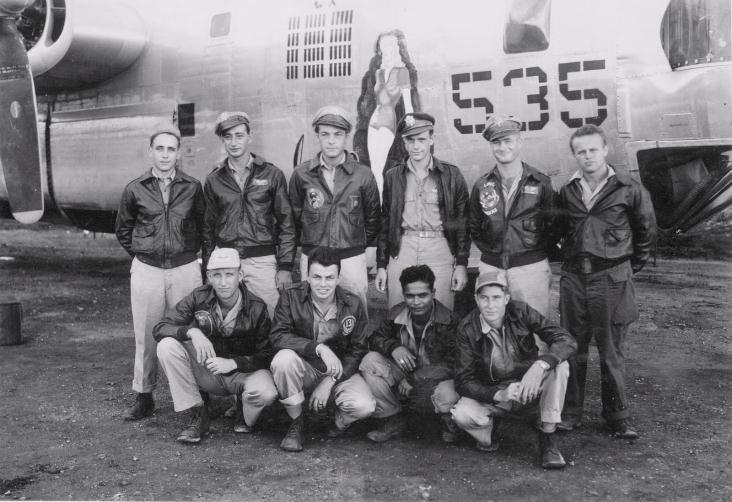
Sabu Dastagir with his Fellow Crew Members, Front Row, Second from Right
This is what the Cadets who were present at the Chapel were preparing for -- the strength, wisdom and knowledge to overcome challenges and serve their nation honorably. Cultural Avatars in their own right, America soon will look to these young leaders as our "Next Greatest Generation," innovators preparing for challenges yet unknown -- and with a global perspective that will keep America competitive.
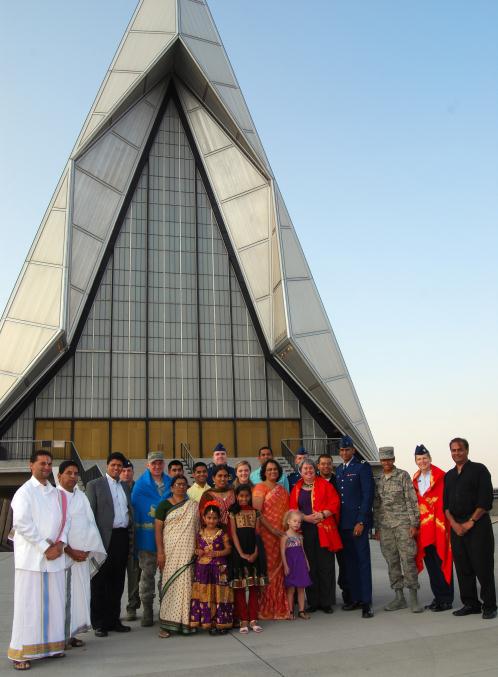
Members of the Cadet Chaplaincy, Local Hindu Temple and Academy Cadets Gather following the Ganesh Prayer. Photo by Air Force Academy Public Affairs.
At the Air Force Academy, religion has be always the elephant in the room; yet, by welcoming the prayers of Lord Ganesh into the Chapel, America's Airmen have challenged the norms and invoked the names of legendary innovators like Billy Mitchell, Curtis Lemay and Chuck Yeager. They have also set an example that places them in the company of great American writers like Thoreau and Emerson, who regularly read the Bhagavad Gita and incorporated the roots of Vedic philosophy into American literature. By holding this historic Ganesh Chaturthi, the cadets have taken their cue from St. Thomas Aquinas, who once wrote "Two things unopposed, cannot obstruct one another."
Science, faith and the arts are the new nexus in which global leaders much simultaneously operate. Advanced computing, stealth and blended wing designs are grounded in science and engineering. But the origins of creative thought are founded in the intellectual capacity to see the infinite -- a daunting task without the spirituality brought forth by the world's faith traditions.
Instead of ignoring the elephant in the room, cadets at the Air Force Academy rose to the occasion and chose to welcome the challenge with open arms -- and our nation is all the better for it. Well done, Airmen.
Ravi Chaudhary is a Lt. Col and Pilot in the United States Air Force.
